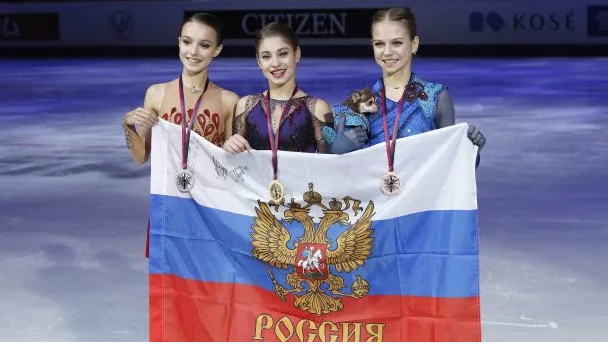Grand Prix Final results show how fast women’s figure skating revolution is progressing
/First-year seniors Anna Shcherbakova (left, bronze), Alena Kostornaia (center gold), and Alexandra Trusova (right, silver) swept the podium at the Grand Prix Final.
The revolution in women’s figure skating is being televised.
That’s a turn of phrase on an admittedly dated reference (Google it). The point is we all have been able to witness, from TV broadcasts or live streams, a season with the most radical change in the sport since child prodigy Sonja Henie, then age 11, began doing jumps in her programs nearly a century ago.
What we watched other child prodigies do at last week’s Grand Prix Final boggled the minds of even those who saw it coming, because no one imagined it coming this soon and to this degree.
This essentially Russian revolution, which has taken maximum advantage of the scoring system and youthful body types to overthrow longtime technical norms of women’s skating, has split the discipline into haves and have-nots.
There are those who have the high-scoring quadruple jumps or multiple triple Axels to seize all the medals. And those who do not have those big jumps and, as of now, no chance to regain the podiums from which they have been summarily ousted.
Given what already had happened this season, it was not surprising that Russian first-year seniors Alena Kostornaia, Anna Shcherbakova and Alexandra Trusova swept the medals in the senior Final. Each had qualified by winning two of the six events in the Grand Prix series.
What is surprising is how far and fast the Troika – as NBC commentator and two-time Olympian Johnny Weir artfully nicknamed them, in a reference to a traditional Russian three-horse sled – has pushed the envelope and how far and fast they have left everyone else behind.
(For the full story on nbcsports.com, click here.)


